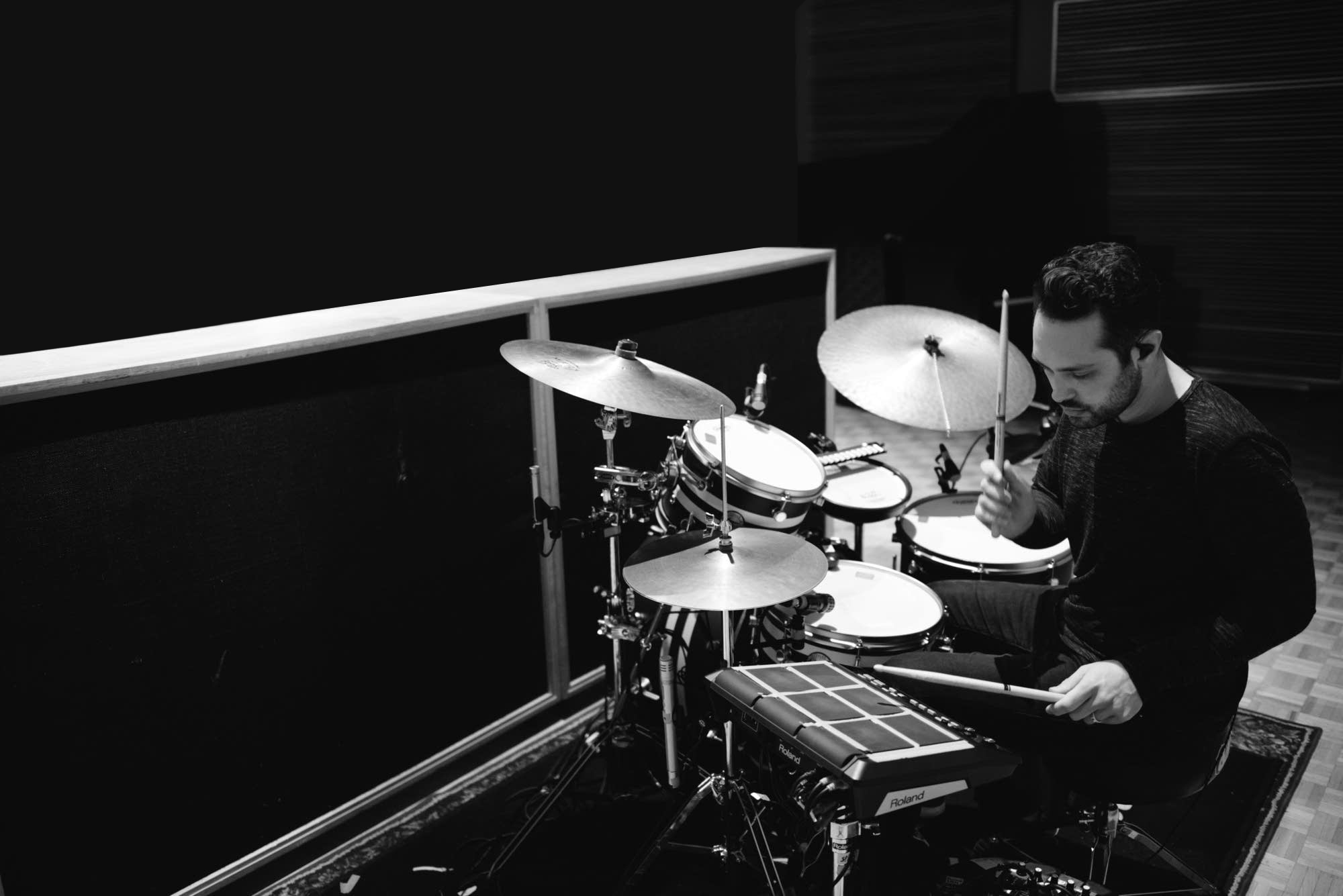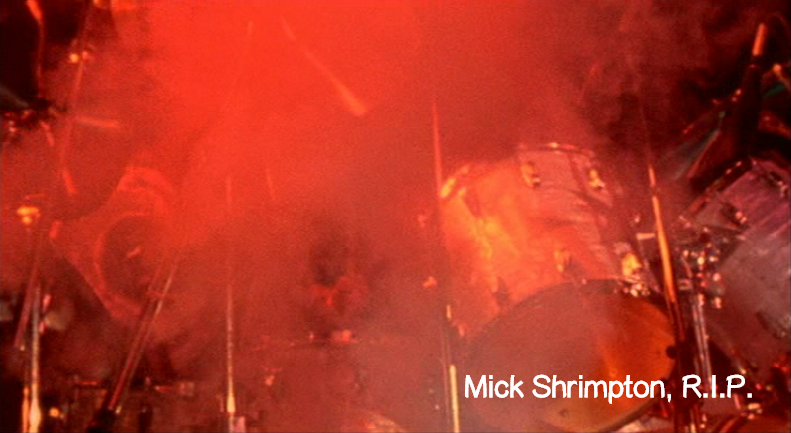I know, I know. Ideally, you would never put yourself in a situation that makes you or anyone else look less than perfect on stage. Ideally, you’re so prepared you never have to think about the next song. Ideally, you know every standard in your genre or every B-side from the bandleader’s discography that he hasn’t played in 20 years. Ideally, I’d be playing drums for U2. But the reality is no matter how well you prepare, sometimes you just have to fake it. Here are my thoughts on making the best of a less than ideal situation.
If you’ve been playing contemporary music on stages long enough, odds are you’ve encountered some version of this.
You’re in the middle of a set and someone yells out a song request, or, maybe the crowd is demanding an encore that wasn’t planned. Before the bandleader obliges, he looks at the musicians one by one with a face that says, “Please tell me you know this song.” By the time his eyes make the rounds and land on yours, you’re already sweating, your heart’s racing. You saw the guitar player and bass player nod. You know the keyboard player toured with the artist who originally recorded the song, so he knows it. Sure, you’ve heard the song on the radio a couple times, but you’re not sure about the kick drum pattern and if the breakdown happens before the bridge or after the guitar solo. What do you do? You could be completely honest and forthright about your level of confidence in your ability to crush this tune, but there’s no time for negotiation. In this moment you either know it or you don’t, and if you don’t, you’re the one person standing in the way of a fan or a client hearing their favorite song. You don’t want to be that guy. While you weigh all this in your head, you feel the eager gaze of your band mates and the energy of the impatient sea of eyeballs in the crowd converging into one giant Imperial death ray that’s going to blast through your drum set and make what happened to that Spinal Tap drummer look like a sunburn (Mick Shrimpton, R.I.P.). So you give the nod.
The first thing is, don’t panic or telegraph that you’re not confident. You don’t want to send the message that the foundation is cracked before you even start building the house. Worse, the hesitation could come out in your playing. If you’re unsure about basics like the tempo, feel, or form, take a few seconds to ask someone. The bass player is a valuable resource because, like you, she’s clued in to these elements and will know how to communicate them. “Medium shuffle with a half time reggae bridge, end on beat 4.” She just saved your butt.
But what if it’s too late to ask anyone because the guitar player has already started the intro? Here’s something I’ve learned the hard way. You’re going to have to nail the tempo and the feel even if someone else starts the song at the wrong tempo. If it’s too slow or too fast, the singer won’t be comfortable. It’s the drummer’s responsibility to find that magic tempo and keep it there. Even if the singer starts the song on guitar and realizes it’s too fast when he comes in with the verse, it’s your job to help everyone slow down to a better tempo without letting the audience know what’s going on. So, as one of my drum buddies says, use your big eyes and big ears. You can tell a lot from the singer’s body language. Is his heel moving up and down to the tempo he’s feeling? If he’s playing guitar can you see his strumming hand or at least his strumming elbow? Can you hear the singer pulling ahead or laying back with his timing? Usually, the vocals dictate the tempo, and the rhythm guitar, a percussive keyboard instrument like piano, or any other instrument playing a syncopated pattern will indicate the feel. Often, the strumming pattern on a rhythm guitar or the bass line will dictate where the kick notes should land. The clues are yours if you know where to look.
Another thing you’ll have to nail is the form. Your dynamics, fills, and instrument choices within the kit depend on your knowledge of the form. Lucky for us, there are only so many different song forms and harmonic progressions that get used over and over again in popular music. This type of ear training can take some practice, but it basically comes down to listening for repeating patterns in the chords and musical tension. Is it a 4-bar chord progression or 12-bar? Let the harmonic tension indicate transitions from a pre-chorus to a chorus or from a bridge to a breakdown.
When it comes to fills, I would keep it on the safe side. Try to put your fills in the transitions between sections and remember it’s usually better to not do a fill than to do one in the wrong place.
Here’s how I would navigate my way through the song.
- Intro – Assuming the drums don’t start the song, use this time to search for clues about tempo, feel, and even the pattern of the groove you’ll play. Listen carefully and come in strong.
- Verses – Play confidently, but stay out of the way of the vocals, and keep it relatively light and simple. You can do some subtle groove variations between vocal phrases.
- Pre Choruses – Build the intensity a little. Maybe you open up the hi hat slightly, or make the kick pattern a little busier.
- Choruses – Ride or open hi hat, louder, but not necessarily peak volume. Save your peak intensity for the final chorus or outro.
- Re-Intro – Whatever you played during the intro, there’s a good chance you’ll have a chance to play it again over a short instrumental section after the first chorus.
- Bridge – Play something different, and again, let your ears guide you. Sometimes all you need to do is change the kick pattern slightly to communicate a change. Or, you could change the sound source your right hand is playing to the floor tom or the edge or bell of the ride.
- Breakdown – Not all songs have them, but if they do it’s either a loud breakdown or a soft breakdown. In a loud breakdown, you usually can’t go wrong with a build on the toms (think “Hit Me With Your Best Shot”). In a soft breakdown, you might want to keep time on the hi hat or add some light cymbal color (think “Whole Lotta Love”).
- Solo – Play something the same. If there’s a solo section in the song, it will usually be over the chord progression from either the chorus or the verse. Let that dictate what you play. For example, if you played a 4-on-the-floor groove through the Chorus, and you notice the chords under the solo sound like the chorus, keep playing that 4-on-the-floor groove over the guitar solo.
- Out Chorus – Often a double chorus is played at the end, or a tag line that gets repeated. You should be at peak intensity here. Use visual cues for the ending.
- Ending – Visual cues are crucial, but also rely on your knowledge of genre cliches. If it’s a classic country song, be ready to end on beat 3; a blues, be ready for the “and” of 2. If it’s a rock song, you might ritard into a big held-out ending on beat 1.
The more we play and listen to music, the more this all becomes part of our musical intuition. When we’re performing music we don’t want to be thinking too much about what we’re doing. Rather, we want to be able to instantly and subconsciously draw from our experience, especially when we get thrown a curveball like an unfamiliar song.

